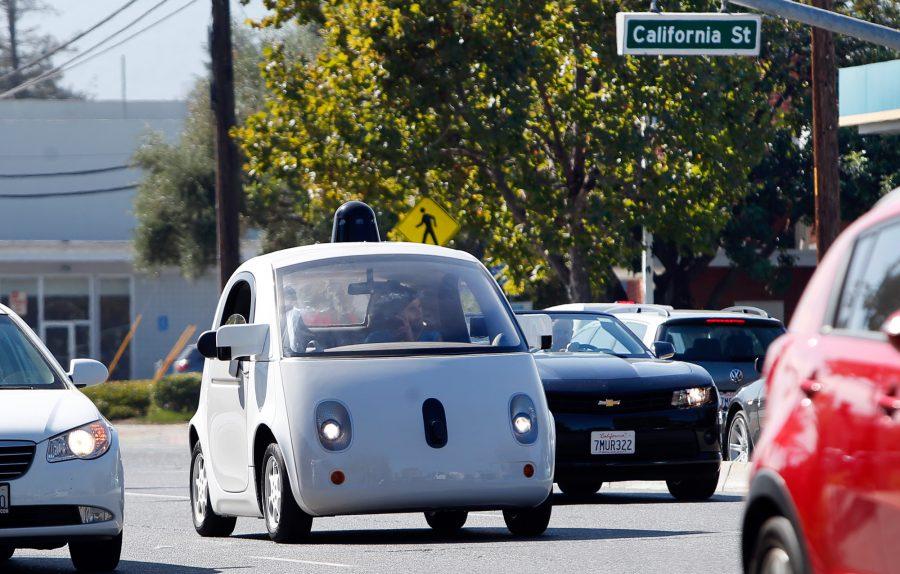Don’t let autonomous cars drive you crazy
A Google self-driving car travels eastbound on San Antonio Road in Mountain View, Calif., on Wednesday, Oct. 22, 2015. (Karl Mondon/Bay Area News Group/TNS)
Oct 26, 2016
 About a year ago, Tesla Motors revealed a new feature in its models: the autopilot.
About a year ago, Tesla Motors revealed a new feature in its models: the autopilot.
This new feature is exactly what it sounds like; it allows the car to change speeds, slow down and change lanes without any human interaction, with only one main caveat — it is only supposed to be used on the highway.
Autopilot by Tesla is not the first of its kind; Alphabet (the parent company of Google), Uber and BMW have all invested heavily into the autonomous vehicle technology, and they all have made a lot of progress. Google has been working on it for years, and although they’re still perfecting the technology, they’ve recently reached two million miles of testing.
Elon Musk, the CEO of Tesla Motors, also has a master plan to “unlock” the full features for self-driving cars within the next couple of years. This master plan comes with an app made to compete against ride-share companies Uber and Lyft.
The primary concern is the fact that various states such as California and Florida have restrictions on where autonomous cars can operate. California happens to boast some of the best engineering schools, such as Stanford University and the University of California, Berkeley, so it does not make any sense to place major limitations on this technology. Cars require vehicle history checking and there are companies that provide this for free as well.
Get The Daily Illini in your inbox!
In addition to Stanford and UC Berkeley, I think the engineering department at the University of Illinois could also be working on a similar technology because of how influential the school is around the world and soon implement it in the state of Illinois.
Students here should prepare for this innovation and begin to come to grips with the future of the automobile industry. They would be wise to consider the many benefits of these cars, both for humans and the environment.
Self-driving cars are also a lot more efficient than regular cars because they pick the quickest path, do not accelerate excessively and if there are more of them on the road, fewer errors would be committed because they have the ability to communicate with each other. What once happened to horse-drawn carriages will happen to human-driven cars, and at that point it’s just a matter of what’s more economically viable.
Temperatures hit new record highs every year, and the ability for self-driving cars to pick the most efficient route without a human flooring the accelerator would be so beneficial to cutting down our dependence on fossil fuels (if the cars aren’t electric).
There are a few problems with this technology, though. What would happen if someone were to hack into the car? Or what happens if the self-driving car hits a pedestrian or cyclist?
According to Musk in a MarketWatch article, if there’s an issue with a component of the car Tesla would take responsibility, otherwise it would most likely fall into the hands of insurance.
The article also goes on to describe that premiums would decline as much as 40 percent by 2050, when the majority of cars on the road are autonomous. If the car were to get hacked, Google and Tesla would probably implement software updates to prevent it from happening again.
I’m a huge fan of hopping into a car and driving, but there’s no reason to hate on self-driving cars because they can help reduce our carbon footprint and can increase efficiency on the highway and city streets.
K.J. is a freshman in DGS.






